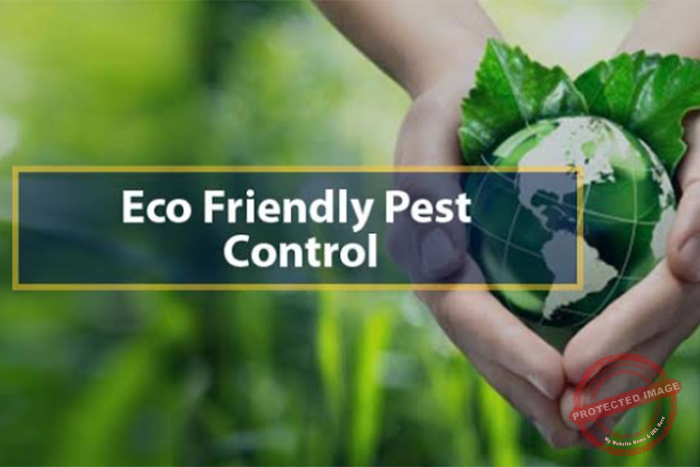Ugu, also known as fluted pumpkin or Telfairia occidentalis, is a popular leafy vegetable in many West African cuisines. Known for its rich nutritional profile and versatile use in soups, stews, and other dishes, Ugu is not only a staple in many homes but also a valuable crop for farmers. Its lush green leaves and tender stems are prized for their flavor and health benefits, making it a must-have in any home garden or farm.
Watering is a crucial aspect of Ugu cultivation. Proper watering practices ensure that the plant receives the necessary moisture to support its growth, leaf production, and overall health. However, finding the right balance is essential, as both overwatering and underwatering can lead to various problems, including poor growth, diseases, and reduced yield.
In this ultimate guide, we will explore the optimal watering practices for Ugu, taking into account factors such as climate, soil type, growth stage, and more. By understanding the specific needs of Ugu and implementing the best watering techniques, you can ensure that your plants thrive and produce an abundant harvest.
Understanding Ugu’s Watering Needs
Ugu’s Growth Habits
Ugu is a fast-growing vine that requires ample water to support its vigorous growth and high leaf production. It thrives in warm, tropical climates and prefers well-drained soil rich in organic matter. The plant’s extensive root system allows it to absorb moisture and nutrients efficiently, but it also means that Ugu needs consistent watering to maintain its lush foliage and prevent stress.
Soil Requirements
Ugu grows best in well-drained, loamy soil that retains moisture without becoming waterlogged. Soil rich in organic matter, such as compost or well-rotted manure, provides the nutrients and water-holding capacity necessary for healthy growth. If your soil is heavy clay or sandy, consider amending it with organic matter to improve its structure and moisture retention. Proper soil preparation is essential for ensuring that Ugu receives the consistent moisture it needs.
Signs of Proper Watering
To determine if your Ugu plants are receiving the right amount of water, observe their overall health and growth. Properly watered Ugu will have vibrant, green leaves that are firm and free of wilting or yellowing. The plant should exhibit consistent growth, with new leaves emerging regularly and a strong, healthy vine structure. Signs of overwatering include yellowing leaves, a foul smell from the soil, and root rot, while underwatering can cause the leaves to wilt, become dry and brittle, and stunt the plant’s growth.
How Often to Water Ugu
Watering Frequency Based on Climate
The frequency of watering Ugu depends largely on the climate in which it is grown. In warm, tropical climates with regular rainfall, Ugu may require less frequent watering, as the natural precipitation can help maintain soil moisture. In drier, arid regions or during periods of drought, Ugu will need more frequent watering to compensate for the lack of rain. In general, Ugu should be watered deeply once or twice a week, depending on the weather conditions and soil moisture levels.
Seasonal Watering Adjustments
Ugu’s water needs can vary with the changing seasons. During the rainy season, reduce watering frequency to avoid waterlogging and root rot. During the dry season or periods of high heat, increase watering to ensure that the soil remains consistently moist. It is essential to monitor the weather and adjust your watering schedule accordingly to meet the plant’s needs throughout the year.
Container-Grown Ugu
Growing Ugu in containers requires careful attention to watering, as container plants tend to dry out more quickly than those in the ground. Check the soil moisture level regularly, and water whenever the top inch of soil feels dry to the touch. Ensure that the containers have drainage holes to prevent water from pooling at the bottom, which can lead to root rot. Using self-watering containers or placing a saucer under the pot can help maintain consistent moisture levels for container-grown Ugu.
Overwatering and Underwatering
Both overwatering and underwatering can negatively impact Ugu plants. Overwatering can lead to root rot, characterized by yellowing leaves, a foul smell, and mushy roots. To avoid overwatering, always check the soil moisture level before watering and ensure good drainage. Underwatering, on the other hand, can cause the leaves to wilt, become dry and brittle, and stunt the plant’s growth. If you notice signs of underwatering, increase the frequency of watering and consider mulching around the plants to help retain soil moisture.
Other Areas That Relate to This Topic
Mulching for Moisture Retention
Mulching is an effective technique for retaining soil moisture and reducing the frequency of watering. Apply a layer of organic mulch, such as straw, wood chips, or compost, around the base of your Ugu plants. Mulch helps to insulate the soil, keeping it cooler and reducing evaporation. It also suppresses weeds, which can compete with your Ugu plants for water and nutrients. Be sure to leave a small gap around the stems to prevent moisture buildup and reduce the risk of fungal diseases.
Irrigation Systems
For gardeners with larger Ugu beds or those who prefer a more hands-off approach, installing an irrigation system can be beneficial. Drip irrigation or soaker hoses deliver water directly to the soil, minimizing evaporation and ensuring efficient water usage. These systems can be set on timers to provide consistent moisture, especially during dry periods. Automated irrigation systems can help maintain the optimal watering schedule for your Ugu plants, reducing the risk of both overwatering and underwatering.
Companion Planting
Companion planting is a technique where different plants are grown together to benefit each other. Ugu can be an excellent companion plant for many vegetables and herbs, as it can help deter pests and attract beneficial insects. However, Ugu’s vigorous growth habit means it can easily overtake other plants if not managed properly. Plant Ugu in its own contained bed or use barriers to prevent it from spreading. By managing Ugu’s growth and pairing it with compatible plants, you can create a thriving garden ecosystem that supports healthy plant development and reduces water competition.
Harvesting and Pruning
Regular harvesting and pruning are essential for maintaining healthy Ugu plants and can influence their water needs. Harvesting the leaves frequently encourages new growth and prevents the plant from becoming leggy. Prune back any dead or yellowing stems to improve air circulation and reduce the risk of fungal diseases. After heavy pruning or harvesting, water the plants thoroughly to support their recovery and encourage robust new growth. By keeping your Ugu plants well-maintained, you can ensure they remain healthy and productive throughout the growing season.
Conclusion
Understanding how often to water Ugu is crucial for maintaining its health and productivity. Ugu thrives in consistently moist soil but can suffer from both overwatering and underwatering. By considering factors such as climate, soil type, and container conditions, you can develop an effective watering schedule tailored to your Ugu plants’ specific needs. Implementing practices like mulching, using irrigation systems, and practicing companion planting can further support healthy growth and reduce water stress.
Regular monitoring of soil moisture and plant health will help you make timely adjustments to your watering practices. With proper care and attention, your Ugu plants will thrive, providing you with an abundant supply of fresh, nutritious leaves for culinary use. By following the guidelines in this ultimate guide, you can enjoy a vibrant and productive Ugu garden that enhances your home and kitchen with its rich flavor and versatility.
![How To Buy Farmland For Investment [Farmer’s Guide]](https://agrolearner.com/wp-content/uploads/2024/01/Farmland.jpg)


